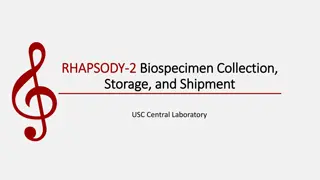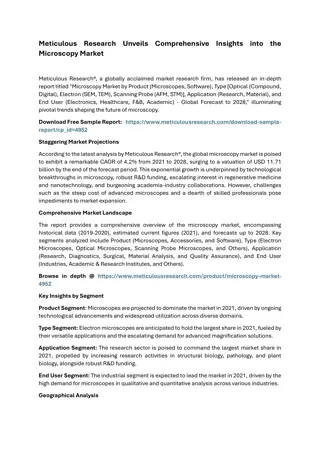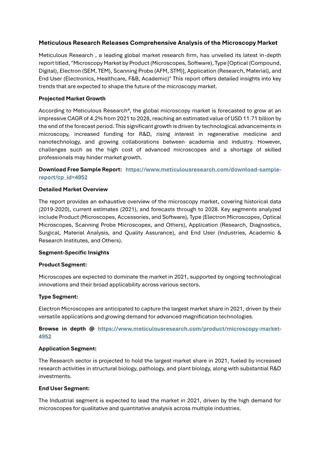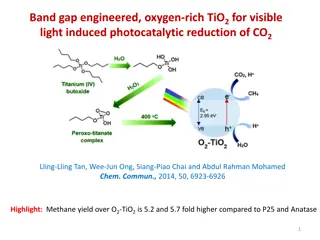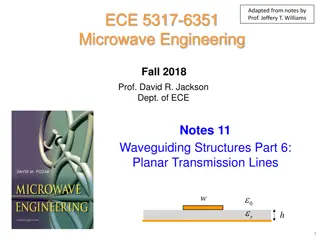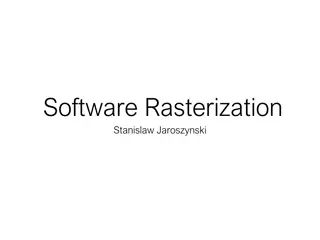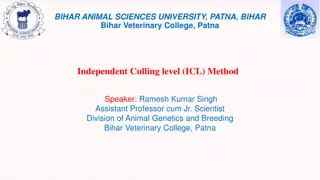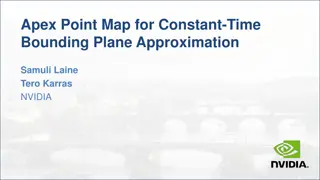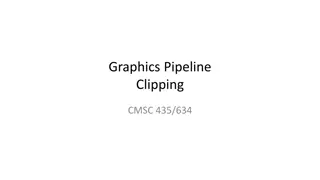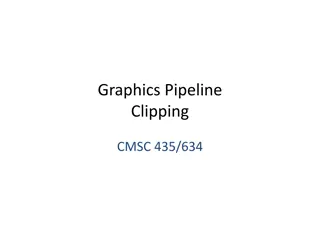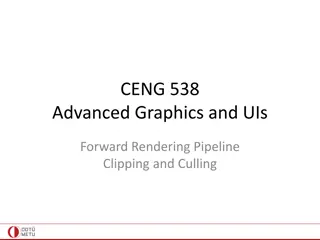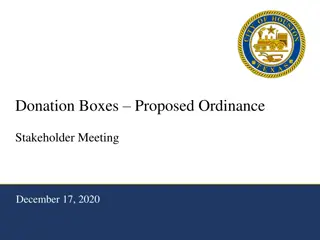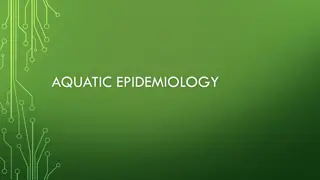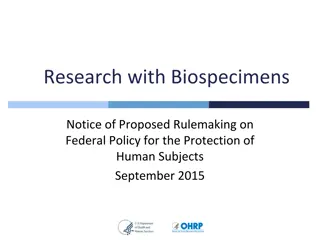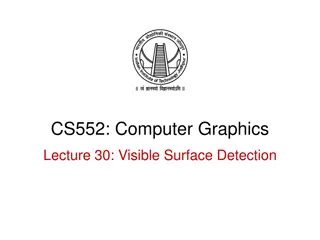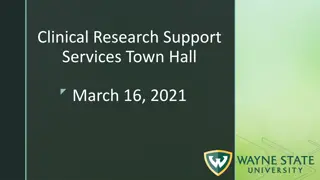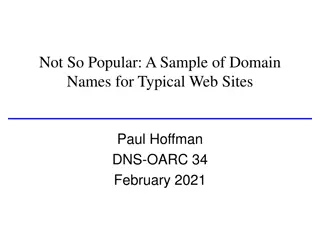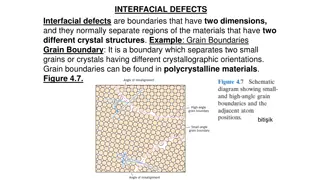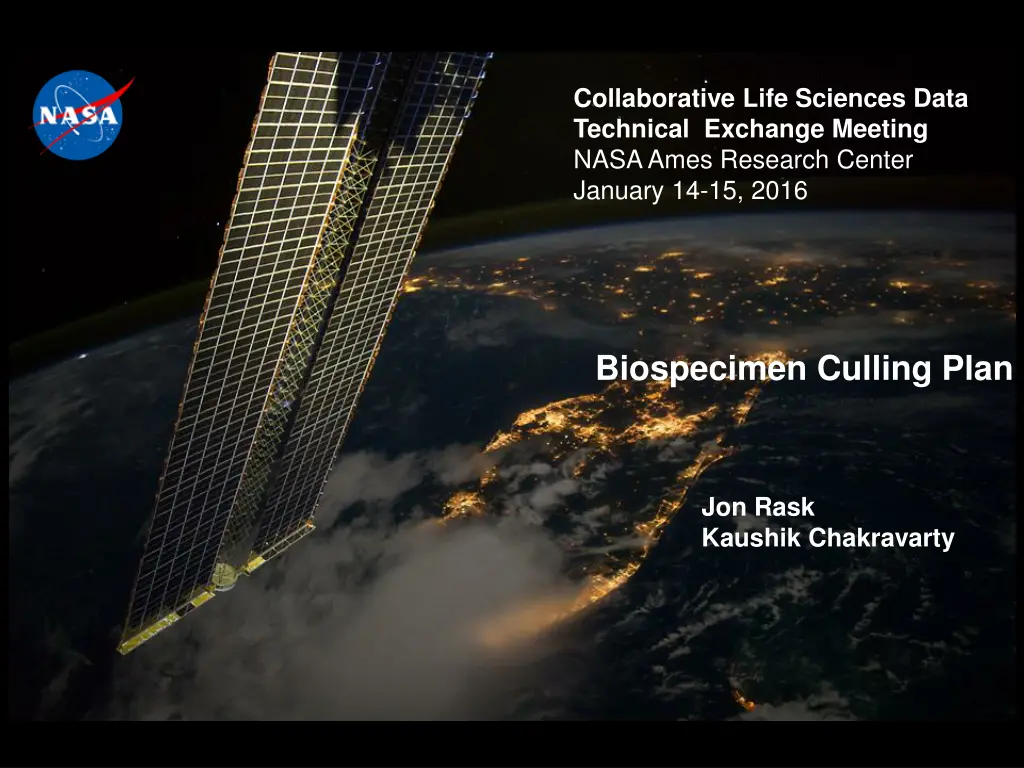
Biospecimen Culling Plan for Collaborative Life Sciences Data Exchange
Explore the detailed Biospecimen Culling Plan created for the Collaborative Life Sciences Data Technical Exchange Meeting at NASA Ames Research Center. The plan outlines objectives, approach, list summary, RNA analysis candidates, and scientific opportunities related to biospecimen culling and analysis for research purposes.
Download Presentation

Please find below an Image/Link to download the presentation.
The content on the website is provided AS IS for your information and personal use only. It may not be sold, licensed, or shared on other websites without obtaining consent from the author. If you encounter any issues during the download, it is possible that the publisher has removed the file from their server.
You are allowed to download the files provided on this website for personal or commercial use, subject to the condition that they are used lawfully. All files are the property of their respective owners.
The content on the website is provided AS IS for your information and personal use only. It may not be sold, licensed, or shared on other websites without obtaining consent from the author.
E N D
Presentation Transcript
Collaborative Life Sciences Data Technical Exchange Meeting NASA Ames Research Center January 14-15, 2016 Biospecimen Culling Plan Jon Rask Kaushik Chakravarty
Biospecimen Culling Plan Outline Objectives of the Biospecimen Culling Plan Biospecimen Culling Plan Approach Biospecimen Culling List Summary RNA Analysis Candidates Scientific Opportunities Histology Candidates Summary
Biospecimen Culling Plan Objectives 1. Increase available space for future samples in the BSF. 2. Identify candidate biospecimens for RNA integrity analysis. 3. Identify biospecimens that should be discarded. 4. Further characterize select biospecimens in the BSF. 5. Perform extraction and purification of RNA from selected biospecimens. 6. Collect RNA integrity data from the select biospecimens. 7. Determine if tissues frozen at -70 C are viable for omics analyses and the GeneLab data repository. 8. 9. Prepare a NASA white paper and/or a manuscript. Provide disposition recommendations for biospecimens in the culling list. 10. Support and guide NASA policy on best practices for curation of biological collections (NPD 7100.xx Scientific Collections Directive), addressing stowage duration and temperature, sample testing cycle and frequency.
Biospecimen Culling Plan Biospecimen Culling Approach Phase 1: Electronic Sorting of Biospecimens Culling list - Sort information on mission, launch date, payload, kind of organism, tissue type, number of tissue samples, radioactive tracers, storage temperature, and fixative use (if any). - To Identify candidates for RNA analysis, histology, disposal, RFP Phase 2: Laboratory Activities - Sample analyses to determine RNA Integrity Number (RIN) Phase 3: Additional Testing, RFPs, and Omics Analyses
Biospecimen Culling Plan Assumptions for RIN Data 8 or above: Viable for future omics analysis 5 to 7.9: Viable for qPCR. Samples may still have viable DNA and could be used for genomics, histology, or immunohistochemistry. Less than 5: Considered non-viable for RNA analysis. The samples may still have viable DNA and could be used for genomics, histology, or immunochemistry. RIN data can be made available to the science community via an RFP.
Biospecimen Culling Plan Biospecimen Culling List Summary
Biospecimen Culling Plan RNA Analysis Candidates
Biospecimen Culling Plan Histology Candidates
Biospecimen Culling Plan Common Tissue Types in the RNA Analysis Candidates
Biospecimen Culling Plan Scientific Investigation Opportunities Omics Analysis: Transcriptomic and Epigenomic Temporal assessment of tissue and RNA viability from spaceflight samples rRNA evolutionary studies across different species Functional analysis of housekeeping genes from the purified RNA, as support to the RFP
Biospecimen Culling Plan Summary Developed a RIN-focused methodology for culling of biospecimens stored at -70 C. Established criteria for science viability using RIN scores Completed electronic sorting of biospecimen culling list Identified ~89 RNA analysis candidate biospecimens The most common tissues types found across all six missions stored in the BSF were liver (3 missions), lungs (3 missions), bone (4 missions), stomach (4 missions), kidneys (4 missions), and adrenals (4 missions). Results from the culling process will support and guide NASA policy on best practices for curation of biological collections, (NPD 7100.xx Scientific Collections Directive) by addressing stowage duration and temperature, sample testing cycle and frequency.
Biospecimen Culling Plan Next Steps Upon completion of Phase 2 RIN analyses, we will better understand the scientific viability of samples stored at -70 C in the BSF. If many samples are found to have high RIN scores, additional RNA analyses may be warranted. Upon agreement of biospecimen dispositions, Request for Proposals (RFPs) can be drafted to make samples available based on our most current understanding of the sample viability per the biospecimen culling list and plan. Send samples with RIN scores of 8 to Omics facilities for analyses and submit data to GeneLab.
Biospecimen Culling Plan Acknowledgements Helen Stewart Jeff Smith Michael Skidmore Alison French Frances Donovan Oana Marcu San-Huei Lai Sungshin Choi Rick Chen Alan Wood
Collaborative Life Sciences Data Technical Exchange Meeting NASA Ames Research Center January 14-15, 2016 Questions?
Biospecimen Culling Plan Stakeholders Biospecimen/data archive facilities Bioscience research and development programs and projects Scientific Community


